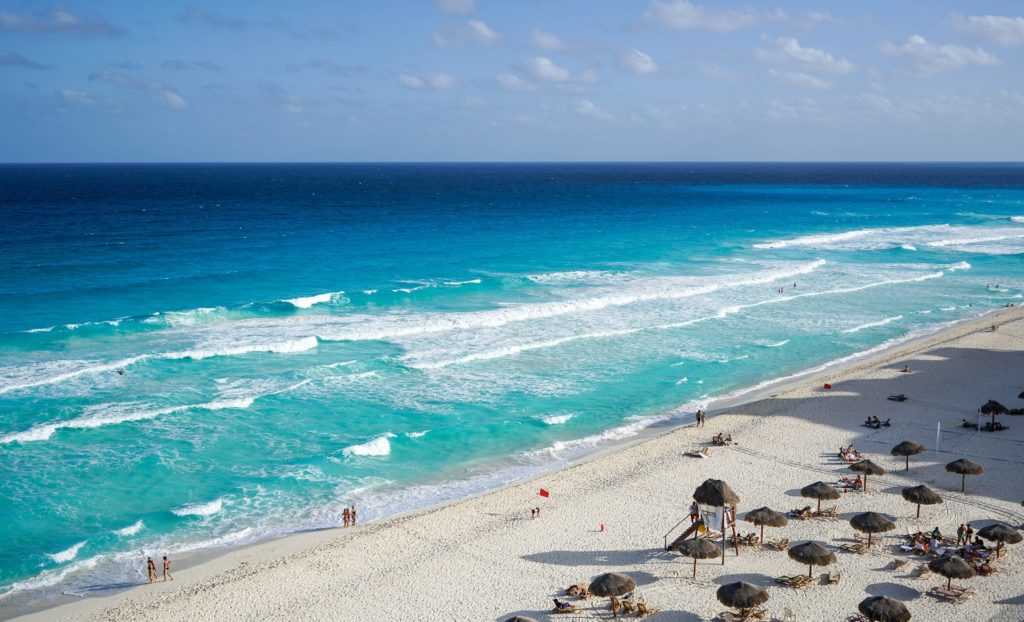Is Mexico Safe For Travel?
Every year we get this same question and it happens even more when the news and media start to feature scary stories warning people about traveling to Mexico. In a nutshell, our travel agency says, “Yes, it is safe!” but there are caveats to that proclamation. There is a lot of hype in the media and a lot of misunderstood information being shared. It is good to be cautious but that is true most any time you leave your home. You can walk out your front door and have something terrible happen but we don’t like to think about it. We tend to only pay attention to the scary things happening elsewhere in the world.

I know you may be tempted to share or trust some news media story but even they can be wrong. It is always best to go directly to the source and decide for yourself what to do. Our trusted source? The State Department’s Travel Advisory website. First, you will see that there are many countries listed there and what their level of advisory is. This only tells a broad version of the story and doesn’t really give you many details as to the WHY or WHERE you should reconsider travel.
Also, have you read the travel advisories that other countries have for the United States of America? It isn’t all roses and rainbows from their perspective. Check out these warnings! I can see why people are cautious about traveling to the USA.
- United Kingdom – “Terrorists are very likely to try to carry out attacks in the USA. Attacks could be indiscriminate, including in places visited by foreigners. You should monitor media reports and remain vigilant at all times.”
- New Zealand – “Exercise increased caution in the United States due to the threat of terrorism. There is a heightened threat of terrorism in the United States and terrorists remain likely to try to carry out attacks. “
- Germany – “The US government warns against [terrorist] attacks and calls for special caution. Most recently, attacks were reported on 31 October 2017 and 11 December 2017 in Manhattan, New York, resulting in several deaths or injuries.”
- Canada – “The possession of firearms and the frequency of violent crime are generally more prevalent in the United States than in Canada. Within large metropolitan areas, violent crime more commonly occurs in economically disadvantaged neighbourhoods, particularly from dusk to dawn, and often involves intoxication. Incidents of violent crime are mainly perpetrated by gangs or members of organized crime groups.”

As of the time this blog post was written, the State Department has rated Mexico’s Travel Advisory a “Level 2: Exercise Increased Caution”. This was updated in November 2018 which is not as recently as some news reports have lead people to believe. It is also something to note that the following countries also have a Level 2 rating: Germany, Belgium, France, Italy, Denmark, United Kingdom, and Egypt. This means you have to read the Mexico travel advisory carefully as some areas are much safer than others.
There are, of course, some standard travel recommendations to ensure your safety that are listed but these apply to MANY other countries you might want to travel to.
- Don’t be out alone at night (safety in numbers)
- Be extra cautious in nightclubs, bars and casinos (many drug cartels frequent these places)
- Don’t flaunt your wealth (it is like wearing a sign saying “Rob me!”)
- Use caution at ATMs or banks when getting money (see above)
- Enroll in the Smart Traveler Enrollment Program (STEP) to receive Alerts and make it easier to locate you in an emergency (be smart!)
- Drink plenty of water (heat & dehydration can cause alcohol to affect you quicker and more intensely than at home)
- Don’t partake in any illegal activities (duh)
If you read the Mexico travel advisory closely, here are the specific comments about the main tourist areas that we sell travel for:
1) CABO SAN LUCAS & SAN JOSE DEL CABO
Baja California Sur state
“There are no restrictions on travel for U.S. government employees in Baja California Sur, which includes tourist areas in: Cabo San Lucas, San Jose del Cabo, and La Paz.”
State Department’s Mexico Travel Advisory
2) PUERTO VALLARTA & RIVIERA NAYARIT
Jalisco state
“There are no restrictions on travel for U.S government employees to: Guadalajara Metropolitan Area, Riviera Nayarit (including Puerto Vallarta), Chapala, and Ajijic.”
State Department’s Mexico Travel Advisory
Nayarit state
“There are no restrictions on travel for U.S government employees to: Riviera Nayarit (including Nuevo Vallarta and Bahia de Banderas) and Santa Maria del Oro.”
State Department’s Mexico Travel Advisory
3) CANCUN & RIVIERA MAYA
Quintana Roo state
“There are no restrictions on travel for U.S. government employees in Quintana Roo state, which include tourist areas in: Cancun, Cozumel, Playa del Carmen, Tulum, and the Riviera Maya.”
State Department’s Mexico Travel Advisory
Yucatan state
“There are no restrictions on travel for U.S. government employees in Yucatan state, which includes tourist areas in: Chichen Itza, Merida, Uxmal, and Valladolid.”
State Department’s Mexico Travel Advisory

So, there you have it. Straight from the horse’s mouth. If it is safe for government employees to travel to, then it should be safe for you as well. However, if YOU feel that it is NOT safe and you would rather find another destination that makes you feel more comfortable, then there is nothing wrong with that. We are happy to help you find a destination that best suits you!
